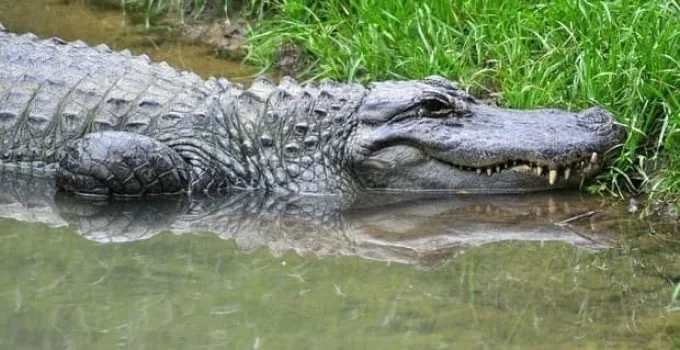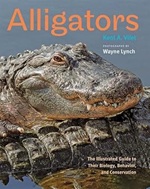Are Alligators Reptiles?
Answer at a Glance: Alligators are reptiles from the order Crocodylia family Alligatoridae. There are only two remaining species of the Alligatoridae family– the American Alligator, Alligator mississippiens, and the Chinese Alligator, Alligator sinensis. [1]
Dig Deeper
- How Are Alligators Classified?
- What Characteristics Define the Class Reptilia?
- How Alligators Differ from Most Reptiles
- Alligators Are Ectothermic (Cold-Blooded)
- 📚References
🔍How Are Alligators Classified?
- Reptiles are of the class Reptilia which contains these orders:
- Squamata (snakes and lizards)
- Sphenodontida (tuataras)
- Testudines (turtles)
- Crocodylia (crocodilians) – Consists of three families
- Crocodylidae (true crocodiles)
- Gavialidae (gharials)
- Alligatoridae (alligators and caimans), the family to which the alligator belongs. [2]
| 📊Important Statistic: There are only two remaining species of the Alligatoridae family– American Alligator, Alligator mississippiensis, and the Chinese Alligator, Alligator sinensis. [3]
🦎What Characteristics Define the Class Reptilia?
Reptiles are classified as air-breathing vertebrates with epidermal scales covering all or part of their body. They have internal fertilization and develop an amniotic sac. Additional defining characteristics are a single occipital condyle (where the skull attaches to the first vertebra), a distinct quadrate bone (bone beneath the lower base of the jaw articulating it with the skull, and ribs attached to the sternum. [4]
| 🐶Cool Fact: A 100-pound dog eats more in a year than an 800-pound alligator. That’s because ectotherms have lower metabolic rates and do not require as much food consumption as endotherms. [5]
🫀How Alligators Differ from Most Reptiles
Most species of reptiles have 3-chambered hearts. The three chambers, each with only a single ventricle, facilitate the mixing of oxygenated blood with deoxygenated blood, which helps regulate the metabolic state. All Crocodilians have a 4-chambered heart, just like mammals and birds. To facilitate the mixing of oxygenated blood with deoxygenated blood, the heart of a crocodilian has a shunt between the left and right aortas, which closes when it needs to transition to a lower metabolic state. [6]
❄️🩸Alligators Are Ectothermic (Cold-blooded)
Like all reptiles, the alligator is an ectotherm. In contrast to endotherms, which maintain a constant body temperature despite environmental fluctuations, endotherms regulate their body temperature through external sources. This means that their metabolism will be higher in higher temperatures. Although most active at temperatures between 82°F and 92°F, alligators will stop feeding when the temperature falls below 70°F and will become dormant at temperatures below 55°F. [7]
📚References
- [1] Encyclopedia Britannica – “Alligator.”
- [2] Smithsonian National Zoological Park – “American Alligator Fact Sheet.”
- [3] Florida Fish and Wildlife Conservation Commission – “Reptiles: Alligator: Alligator Mississippiensis.”
- [4] Savannah River Ecology Laboratory – “American Alligator.”
- [5] Savannah River Ecology Laboratory – “American Alligator (Alligator Mississippiensis).”
- [6] Animal Diversity Web – “Crocodylia.”
- [7] Encyclopedia Britannica – “Reptiles.”
Related Products
Alligators: The Illustrated Guide to Their Biology, Behavior, and Conservation Hardcover – Illustrated
by Kent A. Vliet (Author), Wayne Lynch (Photographer)
In this fascinating account, richly illustrated with more than 150 photographs from award-winning wildlife photographer Wayne Lynch, expert zoologist Kent A. Vliet introduces readers to the biology, ecology, and natural history of the American alligator.

